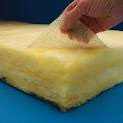
Energy prices are on the rise across the nation. As a result, heating costs will consume an increasingly larger portion of a household’s energy budget. That’s why it’s important to check your home to ensure that your heating dollars aren’t being wasted.
When cold weather approaches, use this checklist of simple ways to make your home more comfortable and keep those escalating energy bills at bay.
Check for Leaks
Weatherstripping and caulking is probably the least expensive, simplest, most effective way to cut down on energy waste in the winter. Improperly sealed homes can waste 10 to 15 percent of the homeowner’s heating dollars.
Take these steps:
- Check around doors and windows for leaks and drafts. Add weatherstripping and caulk any holes you see that allow heat to escape. Make sure doors seal properly.
- If your windows leak really badly, consider replacing them with newer, more efficient ones. Keep in mind, however, that replacing windows can be expensive – it could take you quite awhile to recover your costs from the energy savings alone. But new windows also provide other benefits, such as improved appearance and comfort.
- Every duct, wire or pipe that penetrates the wall or ceiling or floor has the potential to waste energy. Plumbing vents can be especially bad, since they begin below the floor and go all the way through the roof. Seal them all with caulking or weatherstripping.
- Electric wall plugs and switches can allow cold air in. Purchase simple-to-install, pre-cut foam gaskets that fit behind the switch plate and effectively prevent leaks.
- Don’t forget to close the damper on your fireplace. Of course the damper needs to be open if a fire is burning; but if the damper is open when you’re not using the fireplace, your chimney functions as a large open window that draws warm air out of the room and creates a draft. Close that damper – it’s an effective energy-saving tip that costs you nothing!
- Examine your house’s heating ducts for leaks. Think of your ductwork as huge hoses, bringing hot air instead of water into your house. Mostly out of sight, ducts can leak for years without you knowing it. They can become torn or crushed and flattened. Old duct tape – the worse thing to use to seal ductwork, by the way – will dry up and fall away over time, allowing junctions and splices to open, spilling heated air into your attic or under the house. It’s wasteful.
Check Your Insulation
In an older home, that can be the most cost-efficient way to cut home heating costs. Before energy efficiency standards, homes were often built with little or no insulation. As a result, large amounts of heat can be lost through walls, floors and – since heat rises – especially ceilings.
- Weather-strip and insulate your attic hatch or door to prevent warm air from escaping out the top of your house.
- Seal holes in the attic that lead down into the house, such as open wall tops and duct, plumbing or electrical runs. Any hole that leads from a basement or crawlspace to an attic is a big energy waster. Cover and seal them with spray foam and rigid foam board if necessary.
Check Your Heating System
Get a routine maintenance and inspection of your heating system each autumn to make sure it is in good working order.
- Replace your heater’s air filter monthly. Your heating system will work less hard, use less energy and last longer as a result. Most homeowners can replace filters and do such simple tasks as cleaning and removing dust from vents or along baseboard heaters.
- If your heating system is old, you might consider updating it. A pre-1977 gas furnace is probably 50 percent to 60 percent efficient today. That means only half of the fuel used by the furnace actually reaches your home as heat. Modern gas furnaces, on the other hand, achieve efficiency ratings as high as 97 percent. By replacing an old heating system with one of the most efficient models, you can cut your natural gas use nearly in half!
- Use your set-back thermostat. If you have an older home, consider installing one. A set-back thermostat allows you to automatically turn down the heat when you’re away at work or when you’re sleeping at night, and then boost the temperature to a comfortable level when you need it. Remember – it takes less energy to warm a cool home than to maintain a warm temperature all day long. Properly using your set-back thermostat could cut your heating costs from 20 to 75 percent.
- Reverse the switch on your ceiling fans so they blow upward, toward the ceiling. Ceiling fans are a great idea in the summer, when air blowing downward can improve circulation and make a room feel four degrees cooler. A cooling draft is a poor idea when it’s cold, however. By reversing the fan’s direction, the blades move air upward in winter. This is especially valuable in high ceiling rooms, where heat that naturally rises is forced back down into the room.
- Make sure all heating vents are opened and unblocked by furniture or other items. This will ensure that the air is evenly distributed through the home.
Source: Consumer Energy Center
